Vought F4U-1A / 2 Corsair
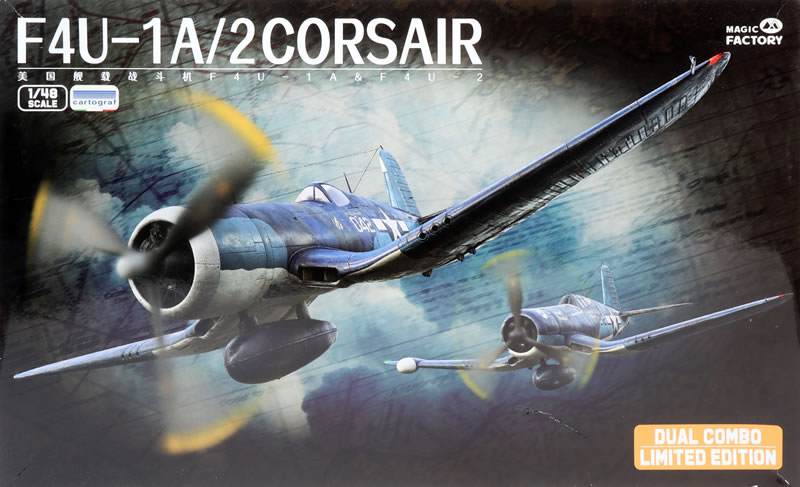
Magic Factory, 1/48 scale
S
u m m a r y |
| Catalogue Number and Description: |
Magic Factory Kit No. 5001 – Vought F4U-1A / -2 Corsair |
| Scale: |
1/48 |
| Contents and Media: |
400 parts in medium grey coloured plastic; 19 parts in clear; two frets of photo-etched metal; two die-cut, self-adhesive masking sheets; one decal sheet with markings for four marking options (two 4U-1A and two F4U-2). |
| Price: |
GBP £64.99 UK Price (£54.16 Export Price) plus shipping available online from Hannants
and model retailers worldwide and online |
| Review Type: |
FirstLook |
| Advantages: |
High quality moulding; two full models may be built from the box - one F4U-1A and one F4U-2; Alternative wings - one set folded and one extended; optional open machine gun bays, guns and ammunition; accurate; high level of detail; separate control surfaces; many options for ordnance, canopies, tail hook positions and more. |
| Disadvantages: |
Tyres look a bit too flat in my opinion. |
| Conclusion: |
There's a lot to like about Magic Factory's all-new 1/48 scale F4U-1 / F4U-2 Corsair kit.
Magic Factory has brought a very well detailed and not overly complex Corsair option to the table.
One of the most thoughtful aspects of the Magic Factory kit is the inclusion of two different sets of wings - one set folded and a second dedicated extended set. One of the few awkward elements of Tamiy'sa kit is the tricky fit between the outer wing panels and the inner wing sections if you wanted to build the wings extended. This won't be an issue with the Magic Factory kit.
Also, surface textures are impressively restrained. Recessed rivets are selective and detail is good. It looks like Magic Factory has done their homework with details and options too.
The more I look at this kit, the more I like it.
Magic Factory's 1/48 scale F4U-1A / 2 kit is a welcome addition to the Corsair market. |
Reviewed by Brett Green

Background
The combat career of the F4U Corsair stretched longer than any other US Navy WWII fighter aircraft. The first of more than 12,000 Corsairs were produced in 1940, and the last of these bent wing birds were still doing battle above Central America nearly thirty years later.
The Vought Aircraft company had a strong association with the US Navy during the inter war decades, but their focus in the 1930s was observation aircraft, trainers and seaplanes.
In response to a US Navy specification issued in February 1938, Vought submitted two designs. With the second of these carrier-based fighter proposals, Vought adopted the simple strategy of building the smallest possible airframe around the most powerful available engine.
At the same time, Pratt & Whitney was developing the supercharged R-2800 radial engine. Radial engines had recently lost favour to the sleeker inline configuration, but the US Navy preferred the ruggedness and simplicity of the radial arrangement. Vought therefore designed their new V-166B around the Pratt & Whitney R-2800 powerplant.
The brute force of the R-2800 engine had to be absorbed by a correspondingly large propeller. With a diameter of 13’ 4”, the Hamilton Standard three-bladed propeller assembly was the largest fitted to a fighter aircraft to that date.
This imposing propeller needed very high ground clearance. Vought’s solution was to install an inverted gull wing. The main undercarriage was fitted to the lowest point of the wing, improving ground clearance for the propeller while still permitting robust landing gear – essential for carrier landings. This design also lowered the profile of the Corsair with the wings folded, and strengthened the join with the fuselage via its sturdy central spar.
Contrary to popular myth, the Corsair was not kept off carriers due to bad landing characteristics and it was not cleared for carrier use in 1944. In fact it was quickly found quite suitable after the initial bounce and wing drop issues were resolved on the first cruise.

The Corsair was relegated to land bases for supply chain reasons and not put on carriers also for this reason as well as concerns about Vought's production capacity, which is why Brewster and Goodyear were brought in to manufacture Corsairs.*
Here is a link to some very interesting archival documents on this subject found by Dana Bell
The first land based Corsair Marines squadron entered front line service in February 1943. The famous Jolly Rogers, VF-17, became the first US Navy Corsair unit to see action shortly after. The Corsair immediately demonstrated its superiority over Japanese fighters with an impressive kill ratio. The performance of the F4U also proved to be at least on equal footing with its US Army Air Force fighter counterparts, the P-47 and the P-51.
The Corsair was also adopted by the British Fleet Air Arm. Unlike the US Navy, Britain operated their Corsairs on carriers from their first sorties in March 1944. With their strikes against the Tirpitz, the Fleet Air Arm was the only Corsair operator to face German forces.
US Navy Corsairs were eventually cleared for carrier use in April 1944, in time to deal with the Kamikaze threat later that year.
The Royal New Zealand Air Force was the third Corsair operator in the Pacific. 238 F4U-1As, 126 -1Ds and 60 FG-1Ds served with 13 RNZAF squadrons from May 1944.
*Thanks to Tracy White for additional historical information.
F4U-1A - Corsair Upgraded
An improved version of the Corsair was soon introduced. Although it is now popularly known as the F4U-1A, this designation was never used officially.
This new version featured a taller canopy with less framing, a simplified windscreen, the pilot's seat was raised seven inches and the tail wheel strut was lengthened. These measures improved visibility for the pilot. The rear quarter windows were also deleted on this version.
Also new was a six inch metal strip added to the starboard wing leading edge to improve stall performance, heavy-duty undercarriage oleo struts to reduce bounce on landing, and the introduction of a larger diameter pneumatic tyre for the tail wheel. All of these features meant that this was the first version of the F4U Corsair to be fully carrier capable.
The clear window beneath the cockpit was covered with sheet metal.
The F4U-1A was also the first Corsair capable of carrying either a drop tank of a 500 lb bomb on a centreline rack.
F4U-2
The F4U-2 was the night fighter variant of the F4U-1 fitted with Airborne Intercept radarinside a bulbous radome on the starboard wing. The outboard .50 cal machine gun was removed, leaving armament of five .50 cal machine guns.
Only 32 F4U-2 night fighters were converted from existing F4U-1s by the Naval Aircraft Factory and another two by front line units.
The type saw combat with VF(N)-101 aboard USS Enterprise and USS Intrepid in early 1944, VF(N)-75 in the Solomon Islands, and VMF(N)-532 on Tarawa.
Corsair in 1/48 scale
There have been a number of 1/48 scale Corsair F-4U-1A and F4U-2 Corsair kits over the decades.
First cab off the rank was Otaki’s 1/48 scale F4U Corsair. This kit dates back to the 1970s but boasts an accurate outline and fine surface detail. However, cockpit and engine detail were very sparse and wheel well was only partially enclosed. The thick, one-piec, non-poseable canopy was not ideal either.
Tamiya released their 1/48 scale F4U-1 Corsair around 1996. Hobbycraft had the great misfortune of launching their 1:48 scale Corsair kits around the same time. Tamiya's was superior in all the important areas - accuracy, detail, engineering and fit.
This was the first in a line of Tamiya 1/48 scale Corsairs that included an F4U-1D and F4U-1A, released in that order. Tamiya also released 1/72 scale F4U-1D, F4U-1A and F4U-1 Bircage Corsairs between 2001 and 2006.
Hobby Boss also has a family of Corsair kits and they have recently included the F4U-1A. Unfortunately, this kit has a number of outline and detail inaccuracies, and also suffers from deeply sucked-in fabric detail.
Magic Factory has now weighed in to the Corsair market with their debut aircraft offering - a 1/48 scale F4U-1A / -2.
The kit supplies parts for two complete models. One may be built as an F4U-1A and the second as an F4U-2 night fighter. Two different sets of wings are included - one folded and one extended.
Magic Factory's 1/48 scale comprises 400 parts in medium grey coloured plastic, 19 parts in clear, two frets of photo-etched metal, two die-cut self-adhesive masking sheets and one decal sheet with markings for four marking options (two 4U-1A and two F4U-2).
When looking at the parts count, bear in mind that this covers construction of two kits and also includes a number of options. You'll be using fewer than 200 parts to build each kit - not too daunting at all.
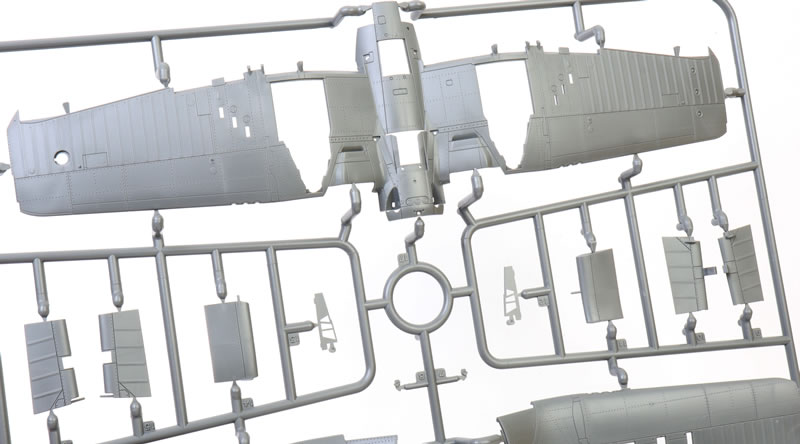
A number of sprues are doubled up with identical parts. These include the fuselage sprue, engine and more.
Surface detail is nicely done. Recessed panel lines are supplemented with a restrained number of rows of recessed rivets. Some are a little deep but I think they look good.
One of the most thoughtful aspects of the Magic Factory kit is the inclusion of two different sets of wings. One set is folded and the second is a dedicated extended set. One of the few awkward elements of Tamiy'sa kit is the tricky fit between the outer wing panels and the inner wing sections if you wanted to build the wings extended. This won't be an issue with the Magic Factory kit.
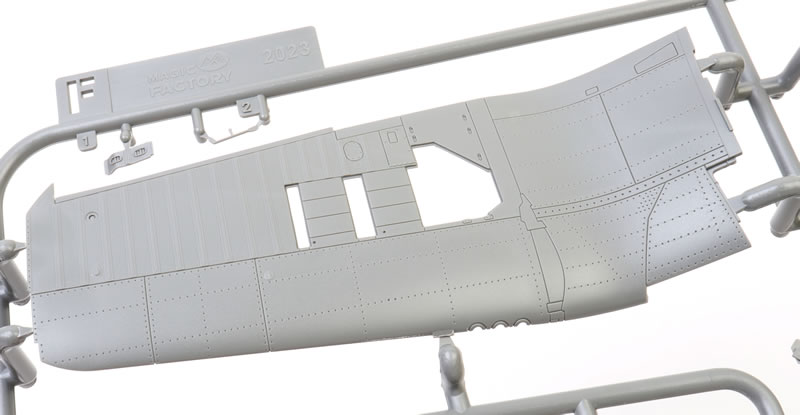
Fabric detail on the control surfaces and on the outer wing panels is restrained.

The fuselage halves are each presented in two main parts. Several options are possible for the turtledeck, mid upper spine and the top of the aircraft nose thanks to the use of inserts. The joins for these inserts fall on natural panel lines.
The cockpit is well detailed and takes into account the different aspects of the F4U-1A and the -2.In fact, I think it is the best 1/48 scale Corsair cockpit avaial;ble today.
Different instrument panels are supplied for both versions. Two styles are supplied for each option - a flat panel with decals and one with raised bezels and dials for painting. In my opinion the instrument panels look a bit simplified and chunky, but they may look better after painting.
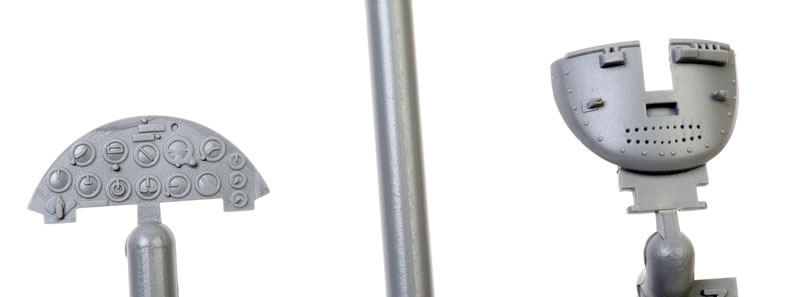
The side consoles look particularly good. Different styles of consoles are supplied for the -1A and the -2.
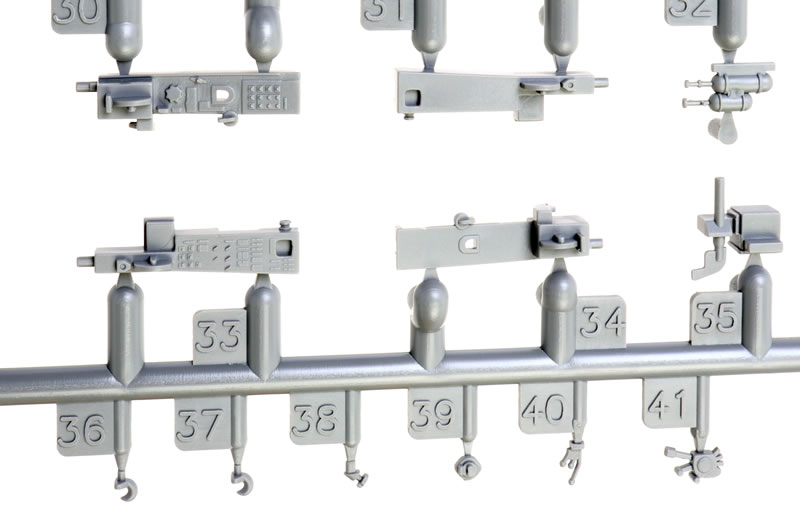
The rear bulkheads are alternative parts too, as are the seat mounts correctly depicting the higher mounted seat for the -1A.
The firewall and the pilot's seat look great.
Photo-etched parts also make an appearance in the cockpit. They are used for the harness straps and a couple of other details.
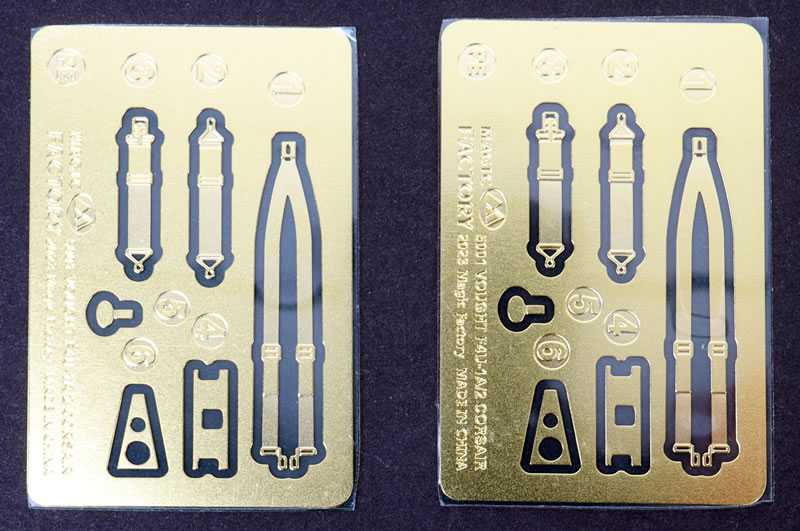
The R-2800 radial engine looks good. These are an all-plastic affairs of only 14 parts each so assembly should be straightforward to assemble. Ignition leads are not included. You might like to add fine wire to depict these.
The ends of the exhaust pipes are hollowed out. Alternate exhausts are offered for the F4U-1a and the F4U-2.
Cowl flaps may be posed either open or closed. Different parts are supplied for each option.
Control surfaces including the elevators, flaps and ailerons are all provided as separate parts. They are attached using stout tabs.
The flaps are depicted in the dropped position.
The undercarriage is designed to be built lowered. The tail hook may be posed lowered or retracted.
The wing intakes, structure, spars and landing gear bays are well done. Full one-piece wing spars are included for folded and extended wings.
Wheels are plastic but some will think the tyres are too flat on the ground (me included). Fortunately for them there are plenty of after-market Corsair wheels available today.
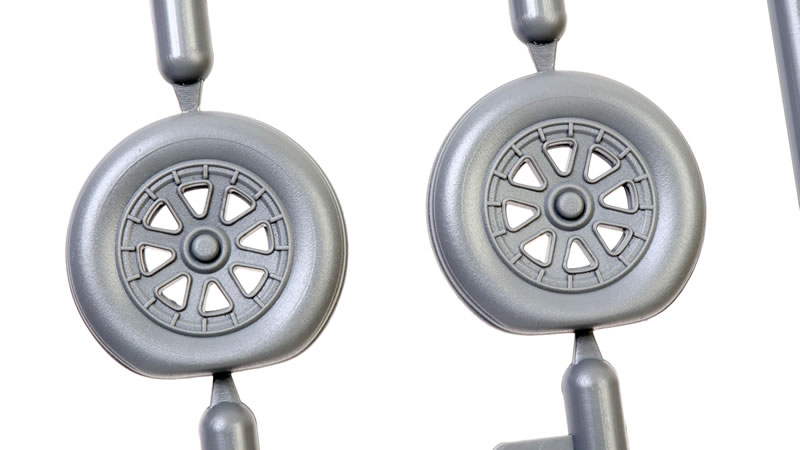
Option include centreline bomb and drop tank.
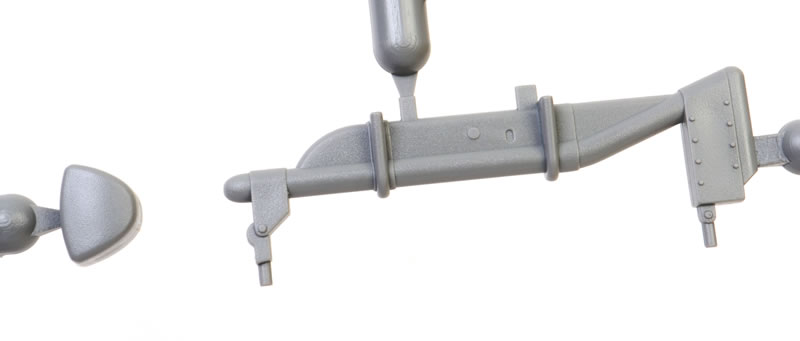
Magic Factory also supplies a full complement of wing guns and ammo belts.
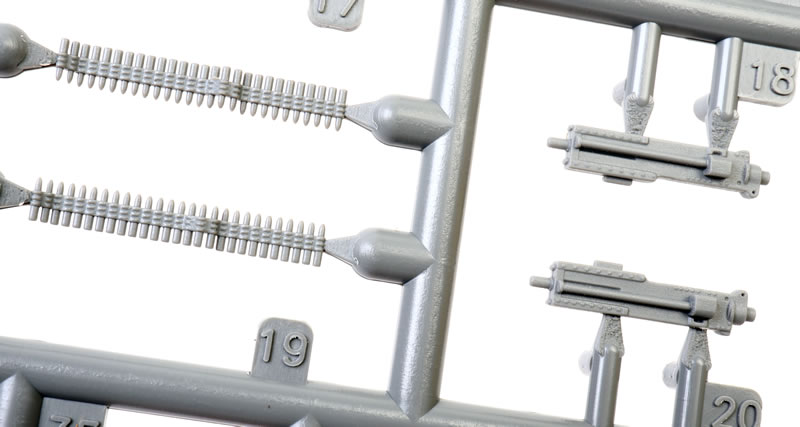
Upper wing hatches are separate parts.

Note that if you are building an F4U-2, the outboard starboard machine gun and ammo belt should not be fitted. This is mentioned in the instructions but I think the wrong part numbers have been quoted. A plug is supplied for the opening of the absent .50 cal in the leading edge of the wing - another nice deatil touch.
Unique F4U-2 components include the extended exhausts, the big wing-mounted radome and the small "T" antennae on the bottom of the fuselage. Of course, the Birdcage canopy is included too.
The clear sprues are well presented. F4U-1 clear and F4U-2 birdcage canopies are supplied.
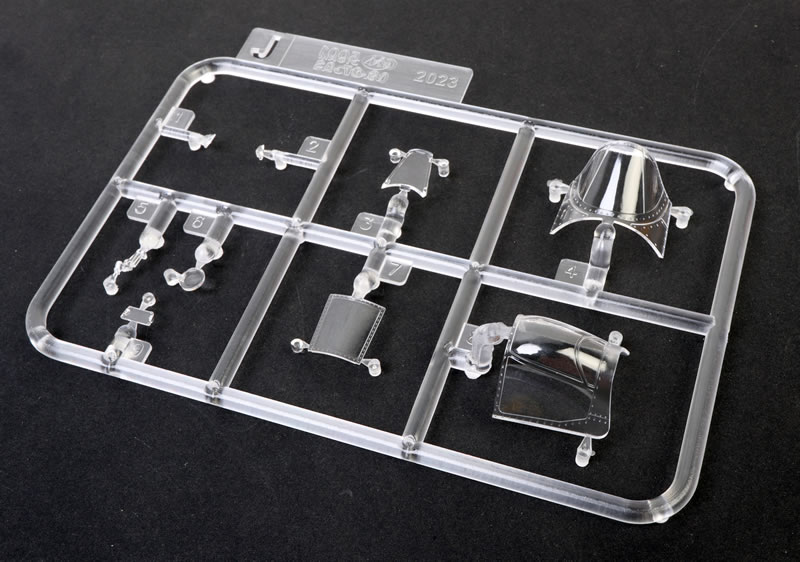
The parts are thin and free from distortion.
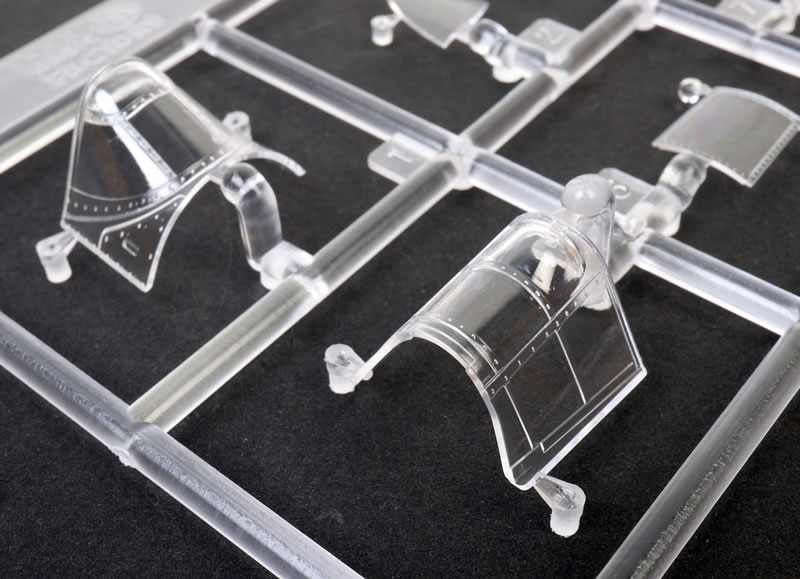
Markings are supplied for four aircraft - two F4U-1As and two F4U-2s - plus extensive stencilling.
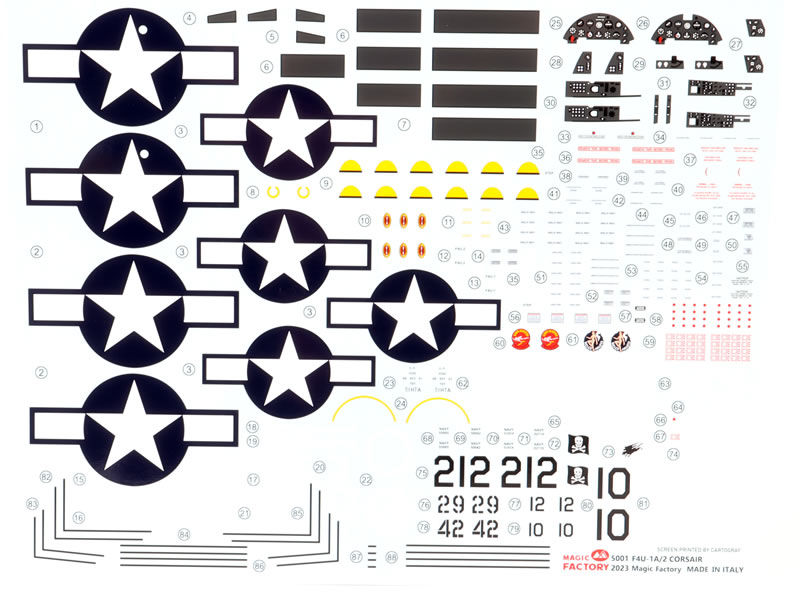
Instrument dial decals, wing walks, sealing tapes, propeller tips, placards and stencils are also included on the decal sheet.
Decals are printed in Italy so I think we can presume that they have been produced by Cartograf.
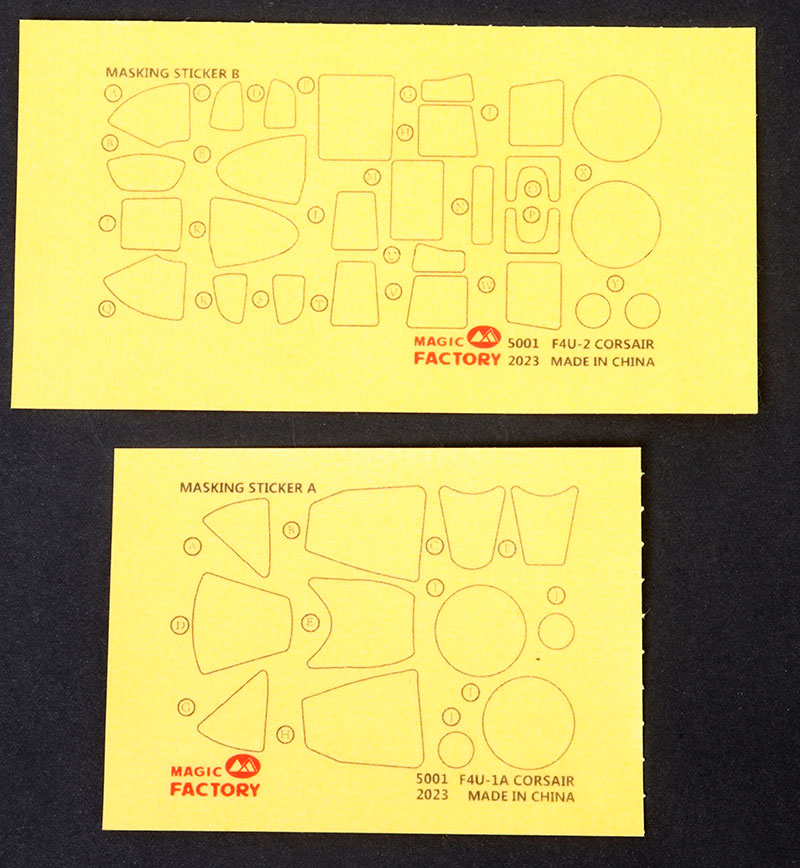
A set of self-adhesive die-cut canopy masks are supplied for both options.
Magic Factory's decision to launch a 1/48 scale F4U-1A / 2 kit as their debut aircraft offering might be seen as pretty bold considering Tamiya's Corsairs are still widely available and well regarded today.
However, 25 years after Tamiya's initial Corsair releases, Magic Factory has brought a very well detailed and not overly complex Corsair option to the table.
One of the most thoughtful aspects of the Magic Factory kit is the inclusion of two different sets of wings - one folded and a second dedicated extended set. One of the few awkward elements of Tamiy'sa kit is the tricky fit between the outer wing panels and the inner wing sections if you wanted to build the wings extended. This won't be an issue with the Magic Factory kit.
Also, surface textures are impressively restrained. Recessed rivets are selective and detail is good. It looks like Magic Factory has done their homework with details and options too.
Magic Factory's 1/48 scale F4U-1A / 2 kit is a welcome addition to the Corsair market.
Thanks to Magic Factory for the sample.
Text and Images Copyright © 2023 by
Brett Green
Page Created 16 October, 2023
Last updated
19 October, 2023
Back to HyperScale Main Page
|
